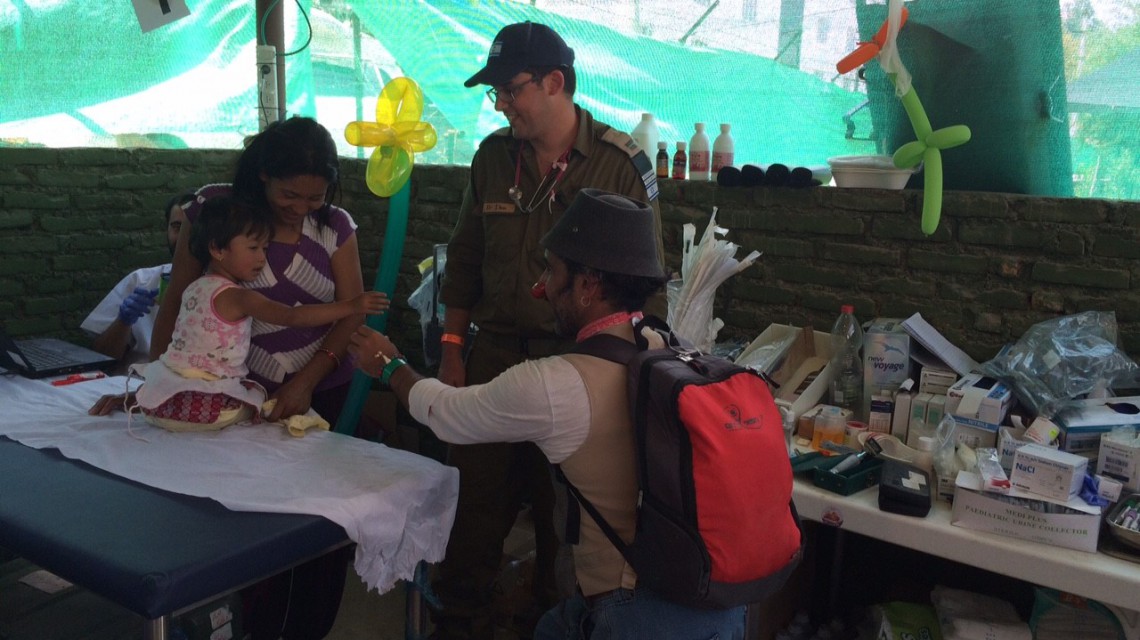
 “This is Dr. Uri Ilan, today’s resident in charge at the tent hospital in Nepal; I need help,” Dr. Ilan told Dr. Jacques Braun, head of the Hadassah Medical Organization’s Pediatric Intensive Care Unit, on the other end of the line.
“This is Dr. Uri Ilan, today’s resident in charge at the tent hospital in Nepal; I need help,” Dr. Ilan told Dr. Jacques Braun, head of the Hadassah Medical Organization’s Pediatric Intensive Care Unit, on the other end of the line.
Dr. Ilan is, in his “regular” life, Chief Resident of the Department of Pediatrics at Hadassah Hospital-Ein Kerem. He had just diagnosed a Nepalese boy with Hemolytic Uremic Syndrome (HUS), a condition that affects the blood and blood vessels. The child needed dialysis, but there was no dialysis machine in the tent.
“Dr. Braun talked us through how to do manual dialysis on this child,” Dr. Ilan relates. “What an extraordinary feeling to be able to get back-up medical expertise like that!”
Although the Israeli team came to Nepal to help victims of the earthquake, residents of Katmandu took advantage of the physicians’ presence to seek help for their sick children.
“We had many patients with injuries from falling walls and roofs, but also many with serious diseases that weren’t related to the earthquake,” said Dr. Ilan. One teen-aged girl, he recalls, came because she had a severe case of acne and didn’t know what was happening to her.
“We even had patients who had never been to a doctor before,” Dr. Ilan notes. Two mothers, for example, brought their little daughters to the Hadassah tent, despite the fact that they had no symptoms of illness or special complaints. They came only because their children had never seen a doctor before and they heard that Hadassah would give them medical attention. “It was great to meet those wonderful little girls,” relates Dr. Ilan. “I kept in mind that I was the first doctor they had met in their lives and that gave me great satisfaction.”
Within 12 hours of arriving, the Israel Defense Forces mission had set up a field hospital near a hospital in Katmandu. In all, 1600 patients were treated. Doctors slept and worked in the tents. “The patients are very quiet and patient,” recalls Dr. Ilan. “One girl had suffered a cut to her head from a collapsed building and you could see all the way to her brain, but she didn’t cry.”
 The building of the largest private orphanage in Nepal, Bal Mandir, had partly collapsed, leaving 100 children homeless. Soon they were sick with diarrhea. “I wondered if anyone was getting the kids to wash their hands with soap,” relates Dr. Ilan. “I found out that they weren’t, so I gave a lesson in public health–just as the first nurses of Hadassah did 100 years ago–and the situation improved.
The building of the largest private orphanage in Nepal, Bal Mandir, had partly collapsed, leaving 100 children homeless. Soon they were sick with diarrhea. “I wondered if anyone was getting the kids to wash their hands with soap,” relates Dr. Ilan. “I found out that they weren’t, so I gave a lesson in public health–just as the first nurses of Hadassah did 100 years ago–and the situation improved.
“We brought a lot with us,” Dr. Ilan adds,”but there’s no comparison to working within a modern hospital campus. In the field, you have to rely on what you know and your intuition. Everyone feels that, so there’s an extraordinary sense of cooperation and resourcefulness.”
Dr. Ilan notes that he came back with even more than a feeling of accomplishment. “Here I’m always rushing,” he says. “I so much appreciated that despite all the terrible suffering by the people in Nepal, there was a calm within the population. The people passed on some of that to me while I was treating them. I hope the feeling stays with me.”
